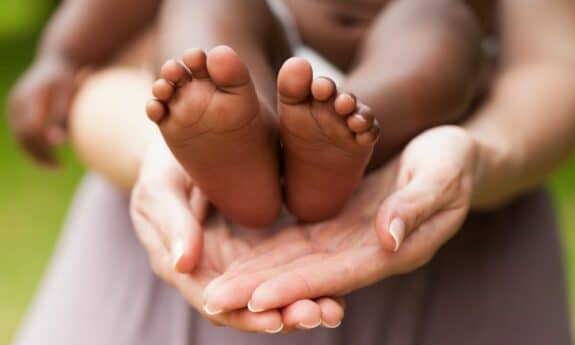Millions of Indian baby girls are suffering from abuse and misery, but British couples have the opportunity to make a difference. The Indian government is changing adoption rules to encourage more Western couples to provide homes for orphans living on the streets and in terrible conditions.
India currently has over 11 million abandoned children, and the government wants more families, both Indian and British, to offer them loving homes. Foreign couples currently face a lengthy adoption process, but under the new government plans, they will be able to complete the formalities in just 45 days.
The focus will be on finding families for thousands of unwanted babies, mostly girls, who are left in “street cots” outside children’s homes in major cities. The government is concerned that these infants might suffer from lack of love and nurturing if they remain in institutions.
This change in rules will give new hope to British families facing challenges in overseas adoption. Several countries have made foreign adoptions difficult or suspended them entirely, but India’s unique problems make foreign adoption a potential solution. Many Indian baby girls are killed at birth due to financial constraints or pressure to have a boy.
The government has implemented more “street cribs” to provide an alternative for mothers who don’t want to resort to female infanticide. While this effort could lead to more babies being abandoned in orphanages, it also means more opportunities to find families for them.
Officials state that Indian families seeking to adopt will still be given priority, but traditional prejudices against adopted children mean that not enough families come forward. Currently, only around 3,000 out of 4,000 orphans get adopted by Indian families each year.
In some Delhi orphanages, a significant percentage of unwanted children are adopted by families in Britain, the United States, Spain, and Denmark. Indian families sometimes hesitate to adopt children with different complexions, leading to a preference for well-matched babies. The stigma surrounding adoption and infertility is so strong that some families even pretend the adopted child is their own.
The Indian government’s Central Adoption Resource Agency aims to make the adoption process easier and increase the number of orphans available for adoption. The new rules will take effect in two months’ time and will focus on finding loving homes for every child.
To adopt an Indian child, couples must be financially secure, have been together for more than five years, and be between the ages of 30 and 55 with a combined age of less than 90. Single individuals are eligible, but same-sex couples are not.
The adoption process for Britons in India follows the same vetting procedure as adopting within Britain. After a Home Study Report is issued to confirm suitability, the search for a cleared child begins. The Indian government’s Central Adoption Resource Agency and the courts must issue “No Objection Certificates” before the adoption is finalized.
Currently, the Indian end of the adoption process takes around a year, but the government plans to introduce short deadlines to complete each stage within 45 days. These new rules will be implemented in the next three months.







